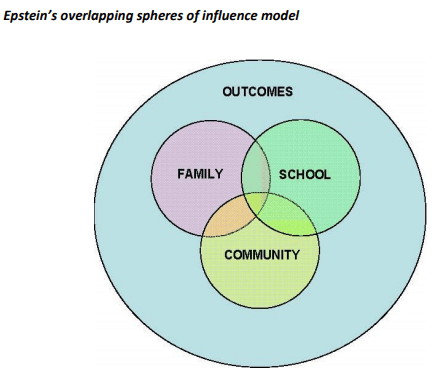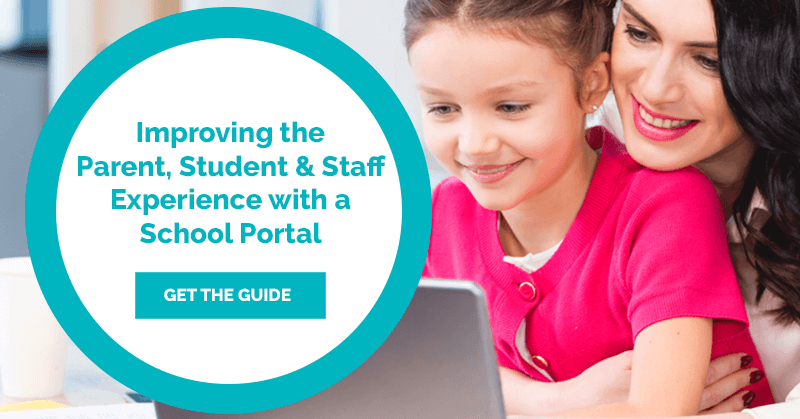Research has consistently shown that children achieve better outcomes – academically, socially and emotionally – when parents are engaged in their education and school life.

It took a lockdown, however, to achieve the levels of engagement schools have long hoped for.
School closures meant parents were suddenly in charge of their child’s learning, and interacting with the school in unprecedented levels. At the same time, schools hastened to adopt the right technology to bring everyone together in new and positive ways.
With schools re-opened and some sense of normalcy returning to student’s lives, the question now becomes - how do you maintain the high-level engagement built during lockdowns, in a sustainable and efficient way?
In this blog post, we explore the the mistakes schools make when it comes to parents, as well as parent engagement strategies to increase interaction and involvement from families.
Mistake #1: Relying on mass communication
From rapidly changing information about school operations, to best practices for remote learning, regular communication between staff and parents became the norm.
Some schools even opted to call every single parent regularly to check in.
Beyond the lockdown period, it’s important that parents continue stay on top of what’s happening in the school community.
Whilst mass communication is required in some instances, it should be the exception, not the rule.
Communication doesn’t need to be as frequent or in-depth as it was, but it should still be consistent and personalised. And with the help of technology, it doesn’t have to be time consuming.
Tips for success:
- Enable all your staff to send online notices to parents through your communication portal (with approval from an administrator). Personalise these notices to the child's year level, subject, house, campus and other areas.
- Use mobile app push notifications sparingly for urgent, last minute or important updates. Only send relevant notifications to parents to prevent them from turning off notifications.
- Some email providers such as Campaign Monitor let you to dynamically personalise the content within a newsletter, based on the group a subscriber is in. This means the parent of a year 9 child could see something different to a year 11 parent.

Mistake #2: Relying on one channel
Parents, like any other audience, consume information in different ways and across different channels. Parents also operate on different schedules.
It can be easy for them to disengage when they feel like they are not being regularly informed of what’s happening in their child’s learning. Print outs in a student's backpack might not be seen by their parents or school emails can get lost in a parent’s cluttered inbox.
Communication should come from multiple tools including newsletters, once-off emails, SMS, school communications app, school portal and social media channels.
Tips for success:
- Think about the types of communication parents receive, which channel is best and whether it should be sent on multiple channels.
- Avoid sending new policies, forms and other documents that parents will need to refer to later via email. Instead house them in a central interface and let them know where this type of document can be found.
- Implement systems that can save time for administrators. For example, instead of individually calling all parents to let them know the school bus will be late, you can send a push notification using the school app to those parents.
- Track engagement levels across channels and survey parents about their communication preferences.
- Remember that communication preferences for parents can change over time.
- Think about the channels you use and frequency of communication. Does this need to change?
- Streamline processes across channels. For example, schools can invest in social media management tools such as Hootsuite, that allows marketing teams to manage accounts across different channels in one interface.
Mistake #3: Ignoring the importance of trust and transparency
The confusion and anxiety surrounding COVID-19 and its impact has been significant.
Rising to the challenge, schools became the source of truth to clear the confusion, putting in place several processes to maintain continuity of learning and support parents while they supported their children. For example, many provided a summary of all the COVID-19 data for the day from different sources.
It can be easy to fall into old habits, relying on students to pass along information and no longer providing parents with insights into what’s happening (during school hours, there is a huge gap in their child’s life that they don’t see).
Tips for success:
- Continue being the source of truth as new developments come in from healthcare and education departments. When changes need to be made to policies and procedures, take the time to explain the rationale for those changes.
- Continue to focus on student and family wellbeing in your communication.
- Encourage student leaders to run engagement activities to keep the sense of community.
- Parents appreciated the school’s live classes and focus on student and family wellbeing. This doesn’t need to stop just because students are back on campus!
- Livestream important assemblies or other school activities. Place the on-demand recordings in a relevant section on the school portal.
- Consider having physical events digitally as well, such as open days, so parents can glimpse what school life is like.
- Update the portal several times a day with photos of things that are happening around the school.
Mistake #4: Not setting clear expectations
The best way to prevent parents from missing out on school communication is to set expectations; expectations around what to expect from staff, students, other parents and the school itself.
Let them know when, how and where they’ll receive communications. Also, how they can best get in touch with the school. This also lets your administrative staff focus their limited time on specific systems and tools, as well as ensure parents know where to access the information they need.
Tips for success:
- Keep a consistent schedule for general school information such as newsletters. Send them out at the same time and frequency.
- Create a document of expectations to support learning continuity when students are learning from home (whether it be due to school closures or the student studying at home after school hours). It can include:
- How the school will support parents
- How parents are expected to support students. For example, a child can rate their learning – and when it drops below a certain level, appropriate staff will contact parents to assist them.
- Create an official school communication policy. This can include:
- Guidelines around the channels and tools used by the school, what they’re used for, any settings that parents on that channel or tool need to adjust, and so on. For example, if you use a mobile app for general school updates, prompt all parents to download it before term and to turn on push notifications.
- Guidelines around how parents can best contact the school, what channel or tool is best for a particular scenario, where they can find information and so on.
Mistake #5: Lack of emphasis on feedback
Establish channels for easy two-way communication, particularly for gathering feedback from families, to continue supporting students who are likely experiencing heightened negative emotions from the stress lockdown had on their education.
This will help schools understand student learning outside of classrooms and solicit new ideas or approaches that provide value. As a bonus, parents who engage in two-way feedback are often more open to changes as they have had a say in the process and are kept informed of the potential change and impact before it happens.
Gather insights around their satisfaction with all aspects of their child’s school life, how to improve existing processes and new ways of providing a better school experience for children.
Tips for success:
- Make it clear that feedback is highly valued. Along with regular surveys, have a permanent form on your parent portal, where parents can go to and quickly provide feedback. Prompt them to regularly fill this in.
- Introduce a forum or online space for parents to share ideas and feedback, as well as request advice. You could create spaces for different topics and enable parents to create new spaces (with approval from administrators).
- When appropriate and if approved by the parent, publicly acknowledge any great suggestions or ideas they have provided. This can help build positive relationships with parents and let them know their ideas are valued.
Mistake #6: Not Creating a resource kit for parents
Schools went above and beyond in terms of providing resources for parents to guide them through effective home learning for their children. It was clear that they liked having access to parent engagement strategies and tools that helped them in their child’s learning and wellbeing.
Why shouldn’t this continue beyond COVID-19? Without information, parent engagement can come to a standstill.
Keep equipping them with knowledge and resources so they can continue to be engaged in their child’s learning and school life.
Tips for success:
- Provide resources via self-service interfaces for parents to view at their own convenience. Link to external resources around creating a stimulating and supportive environment for students at home.
- Continue providing resources around well-being and monitoring their child’s stress levels, online safety and routines.
- Host webinars that can easily be viewed on-demand for parents who couldn't make it or wanted to refer to it later.
- How-to-guides and accompanying training sessions can be placed on the school portal.
- Create online social spaces where students, staff and parents could share photos from home or contribute images on different topics. It also included a regular wellbeing newsletter containing recipe ideas, recommended music, videos, activities and game ideas.
Related reading: [Blog post] How to Design the Perfect School Portal
Mistake #7: Not effectively promoting events and participation
Lockdown saw schools getting creative with keeping parents engaged.
Concerts, dance classes, assemblies, chapel services, information evenings and a host of other events went virtual. They were filmed and uploaded to the school portal or other private network for parents and students to view at their own convenience.
For example, Walford Anglican Girls School live streamed their events, assemblies and other events. They then uploaded to this their VIMEO account (set to private). And then embedded it onto the school portal so students and parents could view it later at their convenience.
Tips for success:
- Continue filming and uploading videos to a central interface for parents who were unable to attend, would like to watch again or share it with family.
- Take a leaf out of people’s love of social media channels by getting creative with your videos and tapping into its benefits. For example, creating a virtual choir where each student record their part from home which can then be put together by your music team and then released on your school’s social media channels or even your school website.
- To take the strain off your busy media team or other staff encourage student helpers, especially those from the senior media classes, to learn to use as well. This is field work is great practice for them!
- Have a calendar on the school portal that syncs to the parents calendar on their mobile. This way they can download event invites and are prompted to attend.
Related reading: [Blog post] School Website Best Practices to Follow
Conclusion
Empowering and supporting parents to stay connected and involved in all aspects of their child’s school life is challenging, but not impossible.
For more actionable insights into how you can increase engagement with parents, students and staff, check out our guide on 'Improving the Parent, Student and Staff Experience with a School Portal'.
In this guide, we look at how you can present information and communication to parents, students, teaching and administration staff, in a mobile-friendly, engaging and personalised way with an integrated portal.
We’ll delve deeper into how to keep the student, parent and staff experience at the forefront of your technology ecosystem, as well as common use case scenarios and the pain points they solve for each type of end user.
